You want to have your head bite treated? Then you’ve come to the right place. In this article you will find all the important information about the malocclusion itself and the head bite treatment.
Whenever one or more teeth are outside the ideal dental arch shape of the upper jaw or lower jaw, dentists and orthodontists speak of a malocclusion.
For example, the teeth may be forward or backward, rotated, or simply not growing out where they should.
Most of the time, tooth misalignments have only aesthetic effects. So they disturb us visually, but do not negatively affect our health.
| Get 150 € discount on your dental correction! |
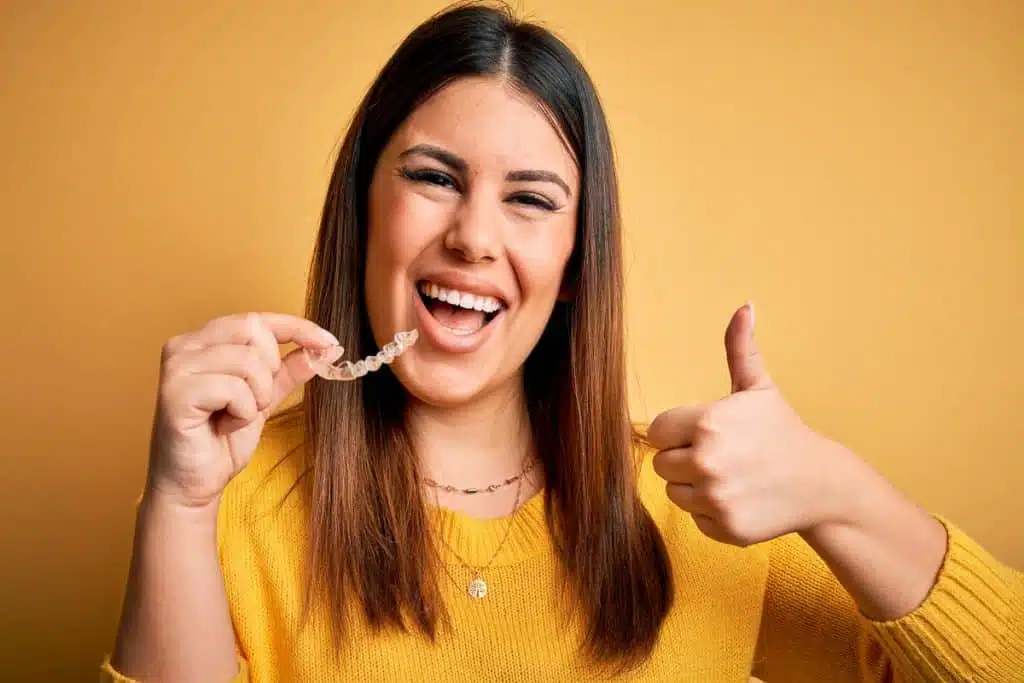
Book a consultation appointment now at a nearby DrSmile partner practice and find out if teeth straightening with aligners is right for you.
The appointment is completely non-binding and does not involve any costs.
With the code “THATSMILE150” you will receive 150 € discount on the treatment.
In some cases, however, crooked teeth can also make it difficult to clean teeth or eat. Speech disorders (e.g., lisp) are also common.
Serious health consequences are also possible. However, they are usually the result of extreme tooth misalignment.
A common malocclusion is the so-called head bite. This is a malocclusion in which the relationship between the upper and lower jaw is not correct.
The head bite often disturbs sufferers for aesthetic reasons. In most cases, however, the misalignment of teeth also needs to be treated for health reasons.
You can find more information about the topic of headbite as well as possibilities of treatment in this article.
Here you can also find out whether discreet treatment with invisible braces (aligners) is possible.
You want to know directly? Then make a free and non-binding consultation appointment here.
You can find a first overview of all malocclusions here.
Many patients have already had their misaligned teeth successfully treated with invisible dental splints. Take a look at their before/after pictures here.

What exactly is a head bite?
A head bite is one of three types of crossbite.
The latter refers to a malocclusion in which the posterior teeth (small and large molars) do not close properly when biting down.
Specifically, this means that the posterior teeth of the lower jaw are positioned too far outward toward the cheek or the posterior teeth of the upper jaw are positioned too far inward toward the palate.
In a normal set of teeth, the cusps and dimples of the molars should bite perfectly into each other when you bite down – you can picture them like gears.
When biting together, the lower incisors are almost completely covered by the upper incisors.
The situation is completely different with the head bite: Here, the cusps of the molars and the edges of the anterior teeth meet directly, resulting in a malocclusion.
For example, a head bite may look like this:
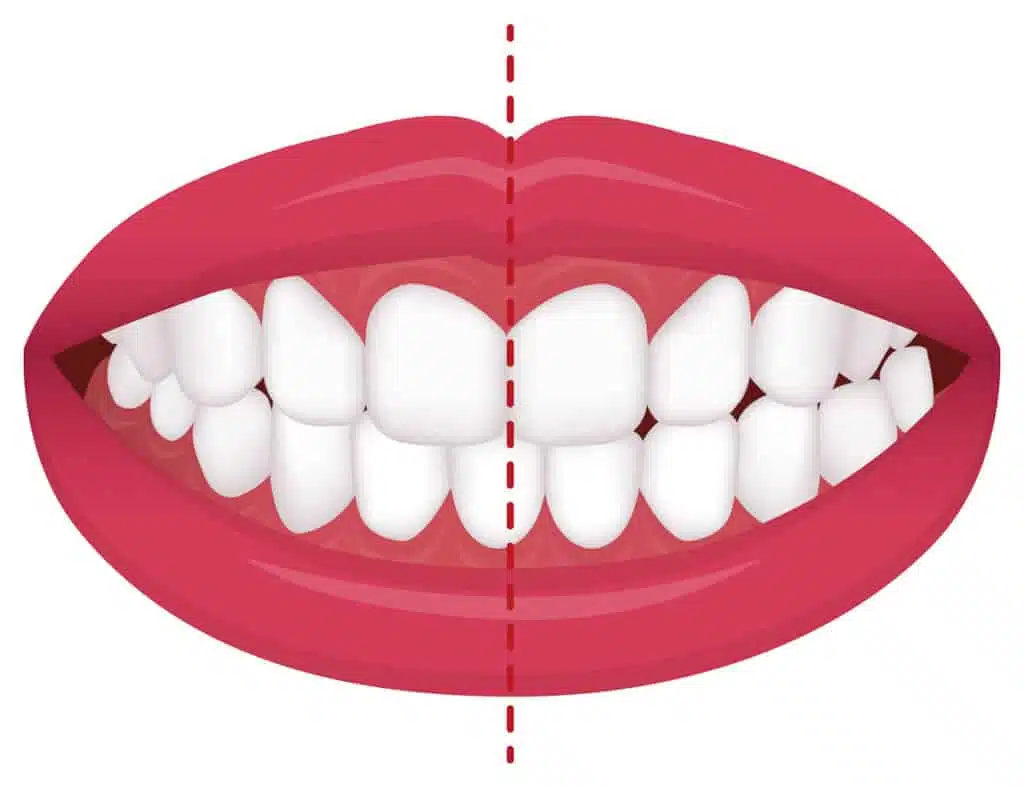
Head bite causes: How does the deformity develop?
Head bite can either be genetically predisposed (rare) or acquired or encouraged by various habits or circumstances.
The former include, for example:
- Tooth tilts
- Muscular imbalances
- Premature or delayed eruption of teeth resulting in jaw size discrepancies.
The latter include, for example:
- Sucking your thumb for too long.
- Accidents
Children who were born with a cleft lip or palate and whose upper jaw could not develop properly due to the resulting scars also tend to have a head bite.
Head Bite Consequences: What are the health effects?
If the head bite is only mild or in an early stage, it usually does not cause serious health problems.
However, a complex head bite can influence the cooperation of tendons, muscles and joints.
It can have a negative impact on health and lead to visual impairment.
Possible cosmetic and health consequences may include:
- Problems with eating due to disturbed chewing function
- Inhibited growth of the upper jaw
- Wear and overload of the teeth
- Problems with nasal breathing
- Lisp and other speech disorders
- Headache, neck pain, tension or even migraine due to the misaligned jaw.
| Get 150 € discount on your dental correction! |

Book a consultation appointment now at a nearby DrSmile partner practice and find out if teeth straightening with aligners is right for you.
The appointment is completely non-binding and does not involve any costs.
With the code “THATSMILE150” you will receive 150 € discount on the treatment.
Head bite treatment: how to proceed?
A head bite should always be treated as early as possible to avoid the health consequences mentioned above.
Ideally, therapy is started in childhood. This is because the jaw is still growing here and can therefore be regulated more easily.
The head bite is usually caused by a too narrow upper jaw. This must therefore be enlarged as part of the tooth correction.
Head bite treatment in children and adolescents
The following orthodontic appliances can be used for head bite treatment of children and adolescents:
- Fixed or loose braces
- Activators
- Various active plates
- Palatal expansion appliances
- Quadhelixes
If the head bite already affects speech development or causes speech disorders, speech therapy should be used as a supplement.
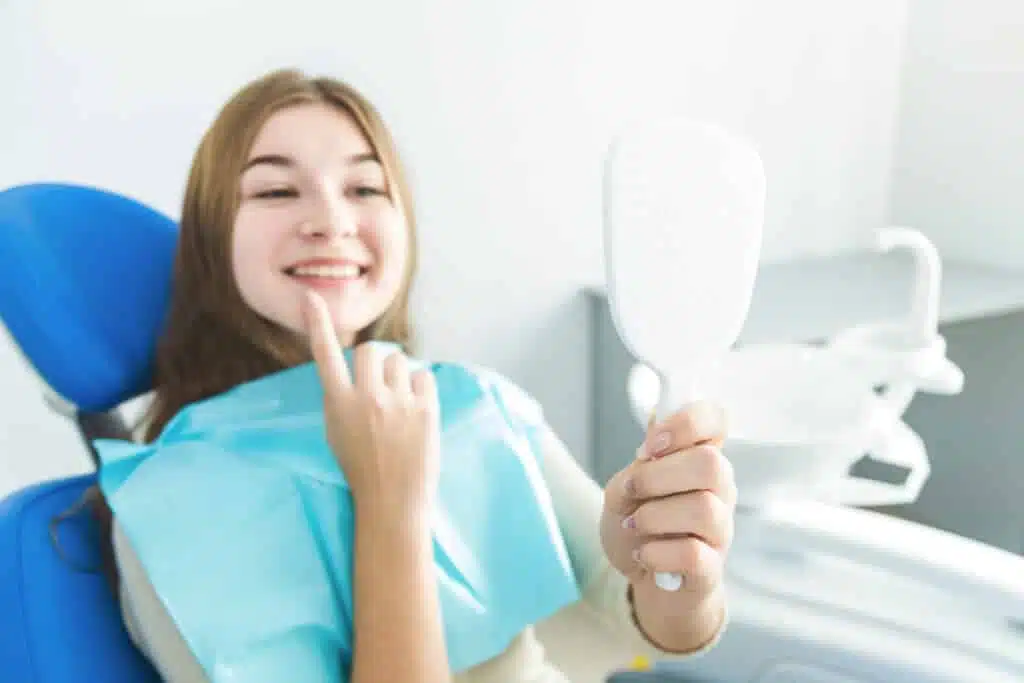
Head bite treatment for adults
In adults, pain or tension in the temporomandibular joints is often the first sign of an undiagnosed head bite.
In this case, the visit to the orthodontist should not be postponed for long.
Head bite treatment in adults is often more complex because the jaw is already fully grown.
However, the complexity of the treatment always depends on the individual extent of the malposition. Often the head bite can be easily corrected with the help of braces.
Fixed braces must be worn for several months, in some cases even for several years.
As a result, quite a few adults fear restrictions in their professional and everyday lives.
Also for aesthetic reasons, fixed braces are an absolute emergency solution for most adults.
In addition, there is the relatively high price. This is because health insurance only covers the costs of head bite treatment in extreme cases.
As a rule, a head bite correction for adults must therefore be paid for by the patient, which is often no walk in the park with treatment costs from 6000 euros upwards.
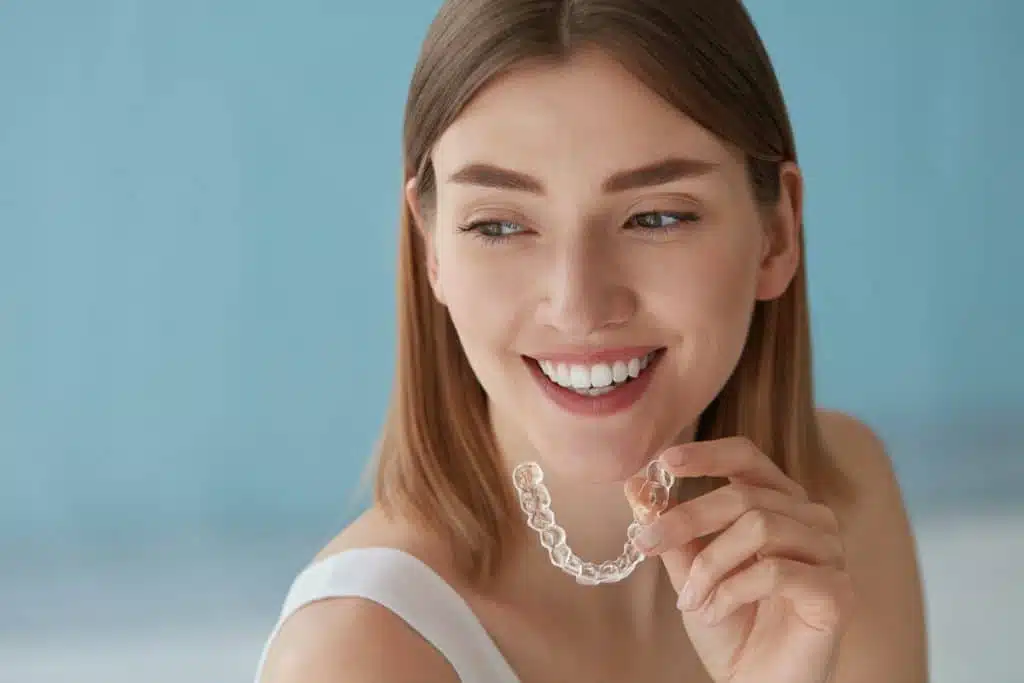
DrSmile: Treat crossbite with invisible braces
In some cases, adults can avoid fixed braces. This is because treatment with transparent dental splints is often possible for mild and sometimes moderately severe manifestations of crossbite.
These so-called aligners enable discreet tooth correction, as they are completely transparent and fit precisely on the teeth.
They can be removed at any time. However, this is only recommended for eating and daily dental care, as they must be worn for at least 22 hours a day.
Another plus point is the price: the cost of invisible dental trays, for example, starts at just 1790 euros or 33 euros a month with the renowned provider DrSmile.
Here you can find more information about DrSmile prices.
You can find out whether your head bite can be treated with invisible aligners during a free, no-obligation consultation appointment that you can book here.
If regular aligners reach their limits, the invisible braces of Invisalign can treat a more pronounced head bite in some cases.
However, they are significantly more expensive than the products of competitors.
| Get 150 € discount on your dental correction! |

Book a consultation appointment now at a nearby DrSmile partner practice and find out if teeth straightening with aligners is right for you.
The appointment is completely non-binding and does not involve any costs.
With the code “THATSMILE150” you will receive 150 € discount on the treatment.
FAQs about head bite treatment and head bite consequences
At this point we will answer some frequently asked questions about head bite treatment and head bite consequences.
Can you live with a head bite?
Whether a tooth misalignment can be accepted or must be treated depends on its degree of severity. However, the head bite is one of the malocclusions that should be treated to avoid health problems.
Is a slight overbite normal?
In fact, it is normal for the upper incisors to slightly overhang the lower ones. An overbite only occurs when the upper and lower incisors protrude more than three millimeters from each other.
How is a head bite treated?
For children and adolescents whose jaws are still growing, various orthodontic appliances can be used. For adults, fixed braces are often the first choice. However, if the malocclusion is only mild to moderate, invisible aligners can also be considered for discreet treatment.

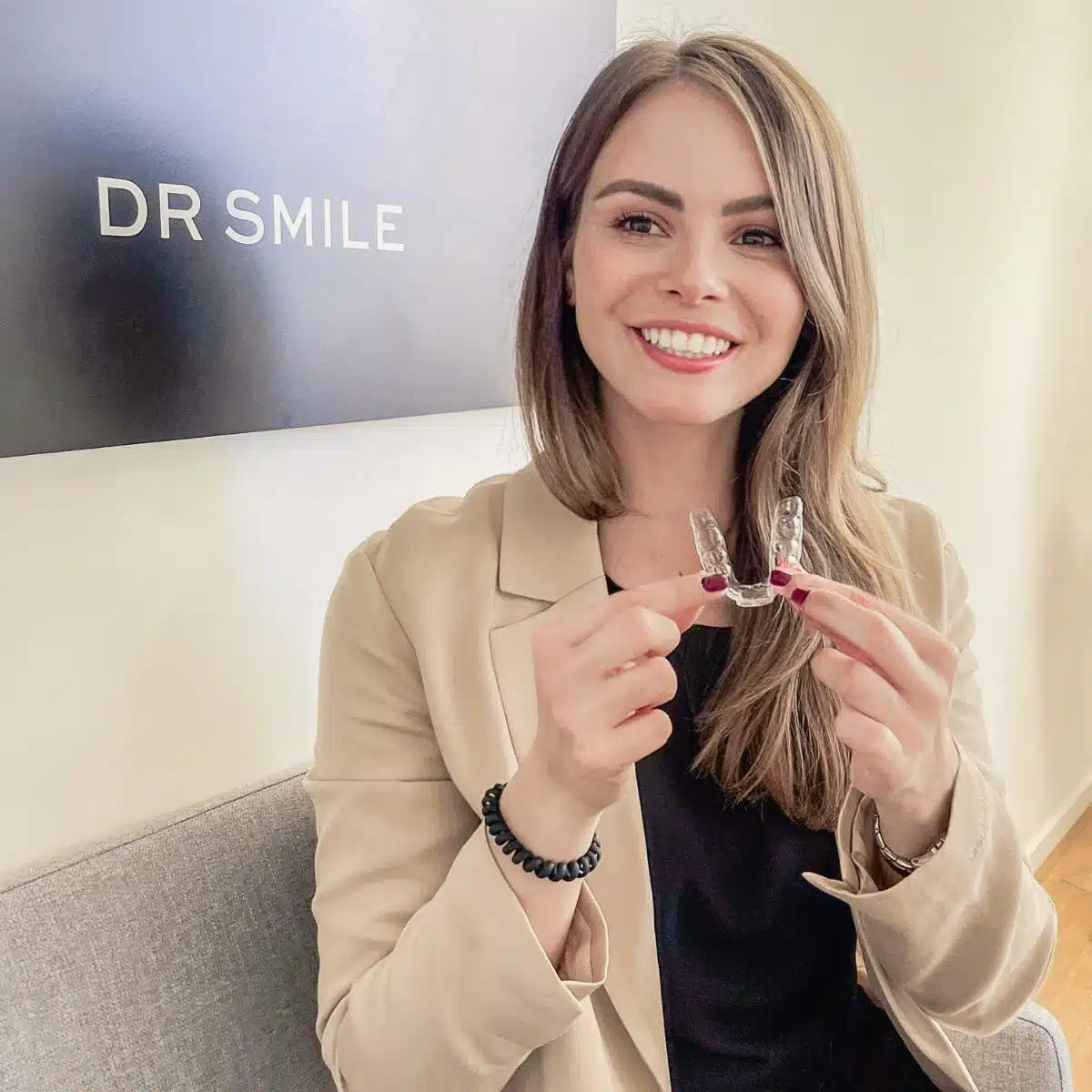
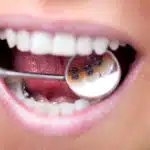
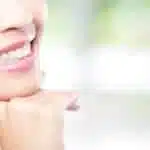
Leave a Reply